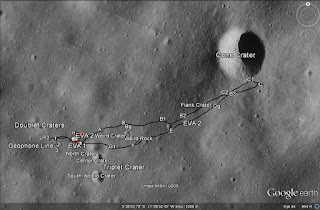You can now take a tour around some of the world's forests in 3D, like this one in Mexico.
The tour even takes you on a quick trip through the undergrowth and then out again.
There is now an option to show sunlight across the planet, it initially sets to the current time and date, but this can be changed using a slider, any location can then be viewed in light or dark conidtions.
Thanks to information provided by USGS, the location of earthquakes can now be viewed as dots. The colour indicates how long ago it occurred (e.g hour/day) and the szie indicates it's size on the Richter scale (there is a key on the side for this).
Plate boundaries with plate movement (indicated by an arrow) can also be viewed, this image shows the San Andreas fault with multiple earthquakes occurring locally within the past day and week.
As if Earth wasn't enough, features from space can now be explored. Beginning with the sky, this is an image of just a small section of space that Google Earth allows you to explore, showing thousands of stars that could only otherwise be seen with a telescope or similar program.
Various constellations can be seen in this image, each can be zoomed in on and explored.
This is an image of the Crab Nebula, the remnants of a past supernova (explosion of a star), various information about it is available from the links on screen.
Here is a single star named Tau 114, many similar stars can be viewed throughout the sky option, food for thought about other solar systems.
The moon is another space feature that can now be explored, here it is shown just like the Earth, there are many links that provide information about different parts of the moon available with the program.
Specific locations are also available, this image shows the landing site of Apollo 14, all other Apollo missions are also available thanks to NASA, other names and locations are also available.
As if the moon wasn't enough, now Mars can be explored too, although the imagery is nowhere near as good as the moon's which in turn is nowhere nar as good as Earth's.
Basics are available with information links where information is known. This image shows one of the two polar ice caps looking not-so-different from our own, just on a smaller scale.
This image displays some of the numerous craters of Mars' surface, not so different from the Moon's and perhaps not so different from the Earth's at some point in it's long geological history.
Some 3D models are now also available under the ocean surface, such as this German shipwreck.
And of course i couldn't forget the famous 3D model of the squid VS the whale.
Perhaps now the name Google 'Earth' is no longer suitable, Google Universe would be more fitting now that the program has expanded so much and has become such a useful learning tool for anyone interested.
The real question is, what will Google do next? Other than singing christmas songs to me on Google search anyway! :)
















No comments:
Post a Comment